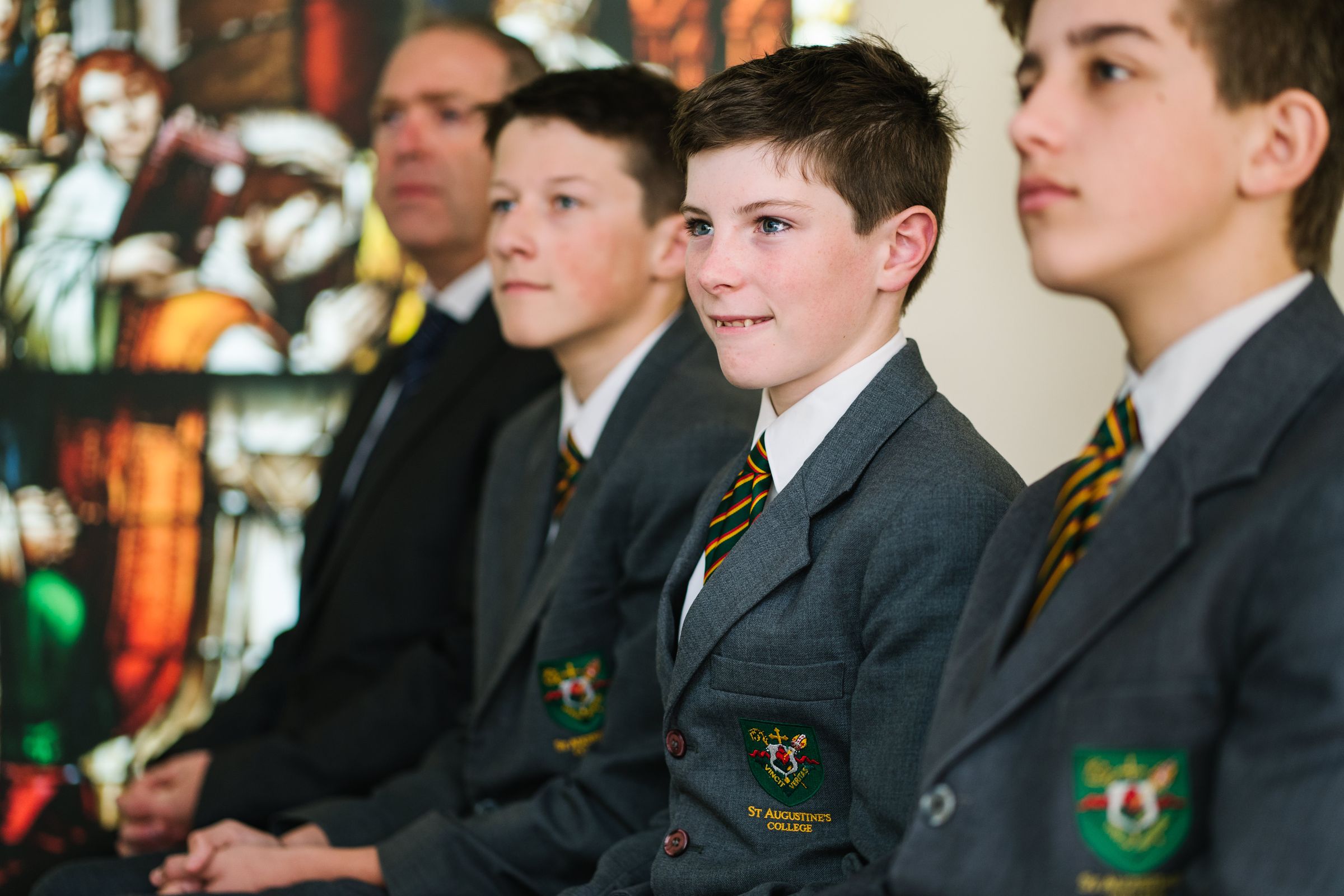Tutors
Relationships are at the heart of an Augustinian community.

Our team of Tutors provides a continuous relationship for your son. Every day begins with fifteen minutes in Tutor Groups, where boys can connect with each other and their Tutor before embarking on their day of learning. Primary students are cared for by their class teacher, and Years 7 to 9 students operate within a horizontal structure, remaining with their Tutor for three years. Our senior boys are grouped vertically within House Groups, again staying with their Tutor for a further three years. This ensures every student and their parents have at least one staff member who truly knows them.


Years 7 to 9
Students are grouped according to their year level due to the specific and differing needs of Years 7, 8 and 9 boys. Each year group has a Head of Year and an Assistant Head of Year supporting our boys. They act as a key contact for parent communication with the College. Heads of Year work closely with the students, staff and parents to support your son in achieving his full potential and growing into an Augustinian graduate.

Years 10 to 12
Students are grouped in Houses across these three years for tutor group. This allows the boys to work with and mentor each other, creating good Augustinian men who role model for each other. Each House has a Head of House who works with Year 10 to 12 students, teachers and parents to help and support the boys' development.

House Groups
Your son is allocated a House on commencement at the College. The Houses have been named in honour of six Australian Augustinian Bishops. The College has a vibrant annual House competition known as the Bishops Shield. All students are involved in House competitions throughout the year, earning points through a variety of activities such as academic endeavours, poetry competitions, creative arts, debating and a wide range of sporting competitions and carnivals.

Crane House
Named after Martin Crane who worked tirelessly to build up Catholic Education and Parishes in his diocese. He suffered with poor eyesight, and eventually became blind. Despite this adversity he continued to work for, and with, the people in his diocese. The symbol of Crane House is the Cross. It reminds us that Martin Crane did not let a handicap interfere with his work; instead he continued his ministry with great courage and commitment.


Goold House
Named after James Goold who is remembered as the person largely responsible for the establishment of the Catholic community in Melbourne. As a leader he worked tirelessly in his service to the people and travelled back to Ireland seeking more priests to help with his work. The symbol of Goold House is the Mitre. It reminds us of the strong leadership of James Goold whose goal was to establish an Augustinian community that offered friendship and care to all.


Heavey House
Named after John Heavey who was the youngest and the last of the six Augustinian Bishops in Australia. He was appointed Bishop of Cooktown and during his term the Vicariate of Cooktown developed to become the Diocese of Cairns. The new Diocese was staffed by Bishop Heavey and approximately 20 Augustinian Priests. The symbol of Heavey House is the Flaming Heart. The heart is a symbol of Augustine’s charity.


Hutchinson House
Named after John Hutchinson who was one of the first of many Augustinians who ministered in Far North Queensland, centred in Cooktown. John Hutchinson (later Bishop Hutchinson) was appointed the first Vicar Apostolic of the region. The symbol of Hutchinson House is the Cincture. The Cincture is the belt that lifts the gown of a worker away from the mud in the field, symbolising the workers in an Augustinian community.


Murray House
Named after James Murray who was widely recognised as a man of vast learning and was renowned for his excellent homilies. He served in the Catholic communities of Northern Queensland and Victoria. The symbol of Murray House is the Book. This representation reminds us that James Murray believed in the importance of education. As well as developing his personal academic talents, he worked in the diocese of Cooktown to establish an education system for all people.


Reville House
Named after Stephen Reville who was a distant cousin of Bishop Crane. He travelled to Australia because of his deep interest in missionary work. He went on to become Crane’s assistant when he went blind. Stephen Reville was a tireless worker who exemplified the Augustinian value of friendship and service. The symbol of Reville House is the Shepherd's Crook. This representation reminds us that Reville was a true shepherd of his people. He offered them friendship and guidance and was there for them when they were in need.












